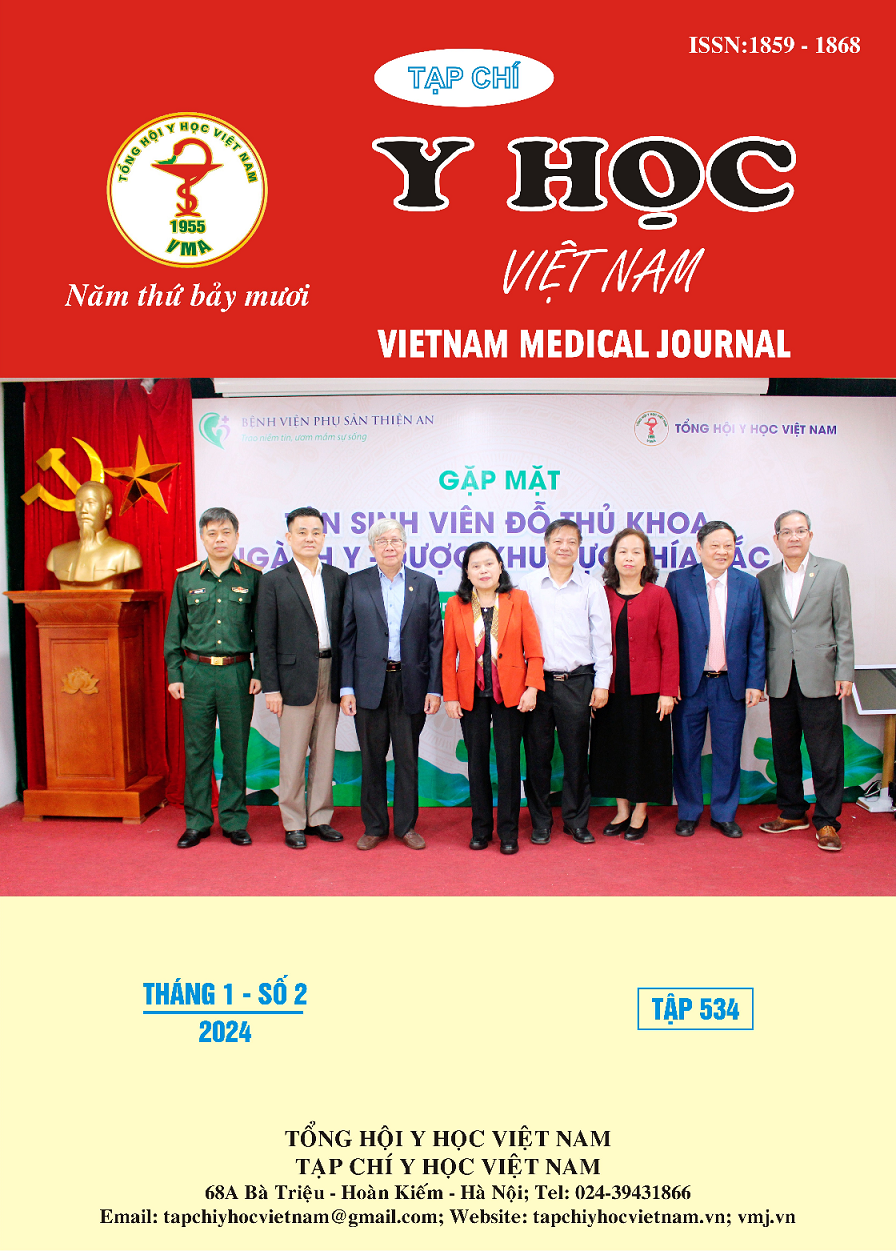RISK FACTORS OF CONTRAST-ASSOCIATED ACUTE KIDNEY INJURY IN PATIENTS WITH ACUTE CORONARY SYNDROME AFTER PRIMARY PERCUTANEOUS CORONARY INTERVENTION
Main Article Content
Abstract
Background: There are many risk factors that increase the rate of contrast-associated acute kidney injury in patients with acute coronary syndrome such as type of medication, dose of contrast agent used during angiography and emergency coronary intervention. Pre-existing chronic kidney disease, diabetes, older age, heart failure, hemodynamic instability, anemia, and concomitant medications have not been fully and individually studied in patients with acute coronary syndromes. Therefore, we conducted research to determine the rate of acute kidney injury after contrast administration and risk factors to better serve the prevention and treatment of acute kidney injury in patients with the acute coronary syndrome. Materials and Methods: There were 181 patients with acute coronary syndrome who received emergency coronary intervention at Dong Nai General Hospital from October 2022 to July 2023. This is a cohort, prospective study. Results: There were 21 cases (11.6%) of contrast-associated acute kidney injury, average age 59.2 ± 12.3, 79.6% of men. In univariate analysis, we noted that contrast medium volume (p=0.038), reduced left ventricular ejection fraction (p<0.001) and Mehran score (p<0.001) are factors that affect the incidence of contrast-associated acute kidney injury. However, upon multivariate analysis, only Mehran score (p<0.001) was associated with contrast-associated acute kidney injury, OR=13 (95% CI 4-35). Conclusions: Mehran score was an independent risk factor for contrast-induced acute kidney injury.
Article Details
References
2. Inohara T. NCDR Study: PCI Volume Increasing in U.S., Japan; Elective Cases Drive Increase in Japan. Journal of the American College of Cardiology. 2020;
3. Nabi Z, Anjum N, Rashid RM, Zahideen ZU. Contrast Induced Nephropathy In High Risk Patients - Myth Or Reality. J Ayub Med Coll Abbottabad. Oct-Dec 2021;33(4):568-571.
4. Phạm Văn Bùi. Khảo sát tổn thương thận cấp do thuốc cản quang và các yếu tố nguy cơ sau can thiệp động mạch vành. Tạp chí Y học Thành phố Hồ Chí Minh. 2017;21:122-129.
5. Narula A. Contrast-induced acute kidney injury after primary percutaneous coronary intervention: results from the HORIZONS-AMI substudy. European Heart Journal. 2014;35:1533-1540.
6. Hoàng Kim Linh. Giá trị của thang điểm AGEF trong dự báo bệnh thận do thuốc cản quang sau can thiệp động mạch vành. Đại học Y Hà Nội; 2015.
7. Hoàng Văn Tú. Đặc điểm tổn thương thận cấp ở bệnh nhân sau chụp và can thiệp mạch vành qua da tại bệnh viện Trung ương Thái Nguyên. Tạp chí Y học Việt Nam. 2023;523:185-189.
8. Nguyễn Đức Trung. Phân tích biến cố tổn thương thận cấp sau dùng thuốc cản quang có chứa iod tại Khoa Chẩn đoán và can thiệp mạch Bệnh viện Trung ương Quân đội 108. Tạp chí Y dược lâm sàng 108. 2021 2021:104-110.


